LG 23 cu. ft. Counter Depth 3-Door French Door Refrigerator with Glide N’ Serve in PrintProof Stainless Steel
Built-in look with counter depth and fingerprint resistant finish. Smart Cooling system designed to help keep food fresh. 10-year manufacturer’s limited warranty on linear compressor.
A lot of thought went into this LG refrigerator. On the outside, it’s counter-depth profile, contoured doors and hidden hinges provide a uniform and stylish look to your kitchen. And inside, an integrated 4-compartment crisper, deli storage center and recessed LED lighting. You get all this, plus our Smart Cooling technology, designed to help keep your food fresh.
- Get more space for groceries in a great feature-packed refrigerator. Nothing beats the convenience of having more food when you need it, and with a generous 23 cu. ft. of space, you’ll have room and room to grow
- Enjoy a built-in look with the counter depth feature on this LG refrigerator. Thanks to its slightly shallower depth, it can stand flush with your counter top for a sleek look
- Smart Cooling system is designed to maintain superior conditions within the refrigerator. The Linear Compressor reacts quickly to temperature fluctuations and helps keep your food fresher, longer. Meanwhile, strategically-placed vents in every section help to surround your food with cool air no matter where you put it
- Consistent temperatures are the key to food freshness. LG took its advanced freshness system 1-step further by adding Door Cooling+ to provide a steady supply of cold air to help keep door contents at peak freshness
- Multi-Air Flow System is designed to maintain superior humidity and temperature levels to help keep your food fresher, longer. Digital sensors constantly monitor conditions within the refrigerator and strategically-placed vents in every section to help surround your food with cool air no matter where you put it
- 2 humidity-controlled crisper drawers, a full-width Glide-N-Serve drawer, and a bonus drawer for fruits and vegetables make party preparations easy
- Your food isn’t the only thing that stays fresh. Only LG offers a 3-layer Fresh Air Filter with dedicated fan that pushes cleaner, fresher air into the fridge
- The Smart Pull Handle makes opening and closing the freezer quick and easy. All it takes is a simple lift of the handle for effortless access to your freezer
- SmartDiagnosis helps the service center diagnose problems over the phone, helping you troubleshoot quickly
- This ENERGY STAR qualified LG refrigerator exceeds federal energy standards to positively impact your energy bill, your energy consumption, and most importantly, the environment
- Now you can have all of the things you love about stainless, without the need for special cleaners or constant attention. LGs PrintProof fingerprint and smudge resistant finish easily wipes clean with a soft, dry cloth for a distinctive kitchen that handles real-life in style
Additional information
| Depth (Excluding Handles) | 28.75 |
|---|---|
| Depth (Including Handles) | 31.25 |
| Depth (Less Door) | 24.75 |
| Depth With Door Open 90 Degrees (In) | 43.5 |
| Height to Top of Door Hinge (in.) | 69.75 |
| Height to Top of Refrigerator (in.) | 68.38 |
| Product Depth x Height x Width (in.) | 31.25 x 69.75 x 35.75 |
| Refrigerator Width (In.) | 35.75 |
| Certifications and Listings | CSA Listed,Energy Star |
| Manufacturer Warranty | 1 Year Parts and Labor, 5 Years Sealed System Parts and Labor, 5 Year Compressor Parts and Labor and 6-10 Years Linear Compressor (Parts Only) |
23 may refer to:
- 23 (number), the natural number following 22 and preceding 24
- one of the years 23 BC, AD 23, 1923, 2023
3 (three) is a number, numeral and digit. It is the natural number following 2 and preceding 4, and is the smallest odd prime number and the only prime preceding a square number. It has religious and cultural significance in many societies.
A door is a hinged or otherwise movable barrier that allows ingress (entry) into and egress (exit) from an enclosure. The created opening in the wall is a doorway or portal. A door's essential and primary purpose is to provide security by controlling access to the doorway (portal). Conventionally, it is a panel that fits into the doorway of a building, room, or vehicle. Doors are generally made of a material suited to the door's task. They are commonly attached by hinges, but can move by other means, such as slides or counterbalancing.
The door may be able to move in various ways (at angles away from the doorway/portal, by sliding on a plane parallel to the frame, by folding in angles on a parallel plane, or by spinning along an axis at the center of the frame) to allow or prevent ingress or egress. In most cases, a door's interior matches its exterior side. But in other cases (e.g., a vehicle door) the two sides are radically different.
Many doors incorporate locking mechanisms to ensure that only some people can open them (such as with a key). Doors may have devices such as knockers or doorbells by which people outside announce their presence. (In some countries, such as Brazil, it is customary to clap from the sidewalk to announce one's presence.) Apart from providing access into and out of a space, doors may have the secondary functions of ensuring privacy by preventing unwanted attention from outsiders, of separating areas with different functions, of allowing light to pass into and out of a space, of controlling ventilation or air drafts so that interiors may be more effectively heated or cooled, of dampening noise, and of blocking the spread of fire.
Doors can have aesthetic, symbolic, ritualistic purposes. Receiving the key to a door can signify a change in status from outsider to insider. Doors and doorways frequently appear in literature and the arts with metaphorical or allegorical import as a portent of change.
French may refer to:
- Something of, from, or related to France
- French language, which originated in France
- French people, a nation and ethnic group
- French cuisine, cooking traditions and practices
LG Corporation (or LG Group), formerly known as Lucky-Goldstar, is a South Korean multinational conglomerate founded by Koo In-hwoi and managed by successive generations of his family. It is the fourth-largest chaebol (family-run conglomerate) in South Korea. Its headquarters are in the LG Twin Towers building in Yeouido-dong, Yeongdeungpo District, Seoul. LG makes electronics, chemicals, household appliances, and telecommunications products and operates subsidiaries such as LG Electronics, Zenith, LG Display, LG Uplus, LG Innotek, LG Chem, and LG Energy Solution in over 80 countries.
N, or n, is the fourteenth letter of the Latin alphabet, used in the modern English alphabet, the alphabets of other western European languages, and others worldwide. Its name in English is en (pronounced ), plural ens.
A refrigerator, colloquially fridge, is a commercial and home appliance consisting of a thermally insulated compartment and a heat pump (mechanical, electronic or chemical) that transfers heat from its inside to its external environment so that its inside is cooled to a temperature below the room temperature. Refrigeration is an essential food storage technique around the world. The low temperature lowers the reproduction rate of bacteria, so the refrigerator reduces the rate of spoilage. A refrigerator maintains a temperature a few degrees above the freezing point of water. The optimal temperature range for perishable food storage is 3 to 5 °C (37 to 41 °F). A similar device that maintains a temperature below the freezing point of water is called a freezer. The refrigerator replaced the icebox, which had been a common household appliance for almost a century and a half. The United States Food and Drug Administration recommends that the refrigerator be kept at or below 4 °C (40 °F) and that the freezer be regulated at −18 °C (0 °F).
The first cooling systems for food involved ice. Artificial refrigeration began in the mid-1750s, and developed in the early 1800s. In 1834, the first working vapor-compression refrigeration, using the same technology seen in air conditioners, system was built. The first commercial ice-making machine was invented in 1854. In 1913, refrigerators for home use were invented. In 1923 Frigidaire introduced the first self-contained unit. The introduction of Freon in the 1920s expanded the refrigerator market during the 1930s. Home freezers as separate compartments (larger than necessary just for ice cubes) were introduced in 1940. Frozen foods, previously a luxury item, became commonplace.
Freezer units are used in households as well as in industry and commerce. Commercial refrigerator and freezer units were in use for almost 40 years prior to the common home models. The freezer-over-refrigerator style had been the basic style since the 1940s, until modern, side-by-side refrigerators broke the trend. A vapor compression cycle is used in most household refrigerators, refrigerator–freezers and freezers. Newer refrigerators may include automatic defrosting, chilled water, and ice from a dispenser in the door.
Domestic refrigerators and freezers for food storage are made in a range of sizes. Among the smallest are Peltier-type refrigerators designed to chill beverages. A large domestic refrigerator stands as tall as a person and may be about one metre (3 ft 3 in) wide with a capacity of 0.6 m3 (21 cu ft). Refrigerators and freezers may be free standing, or built into a kitchen. The refrigerator allows the modern household to keep food fresh for longer than before. Freezers allow people to buy perishable food in bulk and eat it at leisure, and make bulk purchases.
Stainless may refer to:
- Cleanliness, or the quality of being clean
- Stainless steel, a corrosion-resistant metal alloy
- Stainless Games, a British video game developer
- Stainless Broadcasting Company, a TV broadcaster based in Michigan, US
- Stainless Banner, the second national flag of the Confederate States of America
Steel is an alloy of iron and carbon with improved strength and fracture resistance compared to other forms of iron. Because of its high tensile strength and low cost, steel is one of the most commonly manufactured materials in the world. Steel is used in buildings, as concrete reinforcing rods, in bridges, infrastructure, tools, ships, trains, cars, bicycles, machines, electrical appliances, furniture, and weapons.
Iron is always the main element in steel, but many other elements may be present or added. Stainless steels, which are resistant to corrosion and oxidation, typically need an additional 11% chromium.
Iron is the base metal of steel. Depending on the temperature, it can take two crystalline forms (allotropic forms): body-centred cubic and face-centred cubic. The interaction of the allotropes of iron with the alloying elements, primarily carbon, gives steel and cast iron their range of unique properties. In pure iron, the crystal structure has relatively little resistance to the iron atoms slipping past one another, and so pure iron is quite ductile, or soft and easily formed. In steel, small amounts of carbon, other elements, and inclusions within the iron act as hardening agents that prevent the movement of dislocations.
The carbon in typical steel alloys may contribute up to 2.14% of its weight. Varying the amount of carbon and many other alloying elements, as well as controlling their chemical and physical makeup in the final steel (either as solute elements, or as precipitated phases), impedes the movement of the dislocations that make pure iron ductile, and thus controls and enhances its qualities. These qualities include the hardness, quenching behaviour, need for annealing, tempering behaviour, yield strength, and tensile strength of the resulting steel. The increase in steel's strength compared to pure iron is possible only by reducing iron's ductility.
Steel was produced in bloomery furnaces for thousands of years, but its large-scale, industrial use began only after more efficient production methods were devised in the 17th century, with the introduction of the blast furnace and production of crucible steel. This was followed by the Bessemer process in England in the mid-19th century, and then by the open-hearth furnace. With the invention of the Bessemer process, a new era of mass-produced steel began. Mild steel replaced wrought iron. The German states were the major steel producers in Europe in the 19th century. American steel production was centered in Pittsburgh, Bethlehem, Pennsylvania, and Cleveland until the late 20th century.
Further refinements in the process, such as basic oxygen steelmaking (BOS), largely replaced earlier methods by further lowering the cost of production and increasing the quality of the final product. Today more than 1.6 billion tons of steel is produced annually. Modern steel is generally identified by various grades defined by assorted standards organizations. The modern steel industry is one of the largest manufacturing industries in the world, but also one of the most energy and greenhouse gas emission intense industries, contributing 8% of global emissions. However, steel is also very reusable: it is one of the world's most-recycled materials, with a recycling rate of over 60% globally.
With or WITH may refer to:
- With, a preposition in English
- Carl Johannes With (1877–1923), Danish doctor and arachnologist
- With (character), a character in D. N. Angel
- With (novel), a novel by Donald Harrington
- With (album), a 2014 album by TVXQ
- With (EP), a 2021 EP by Nam Woo-hyun

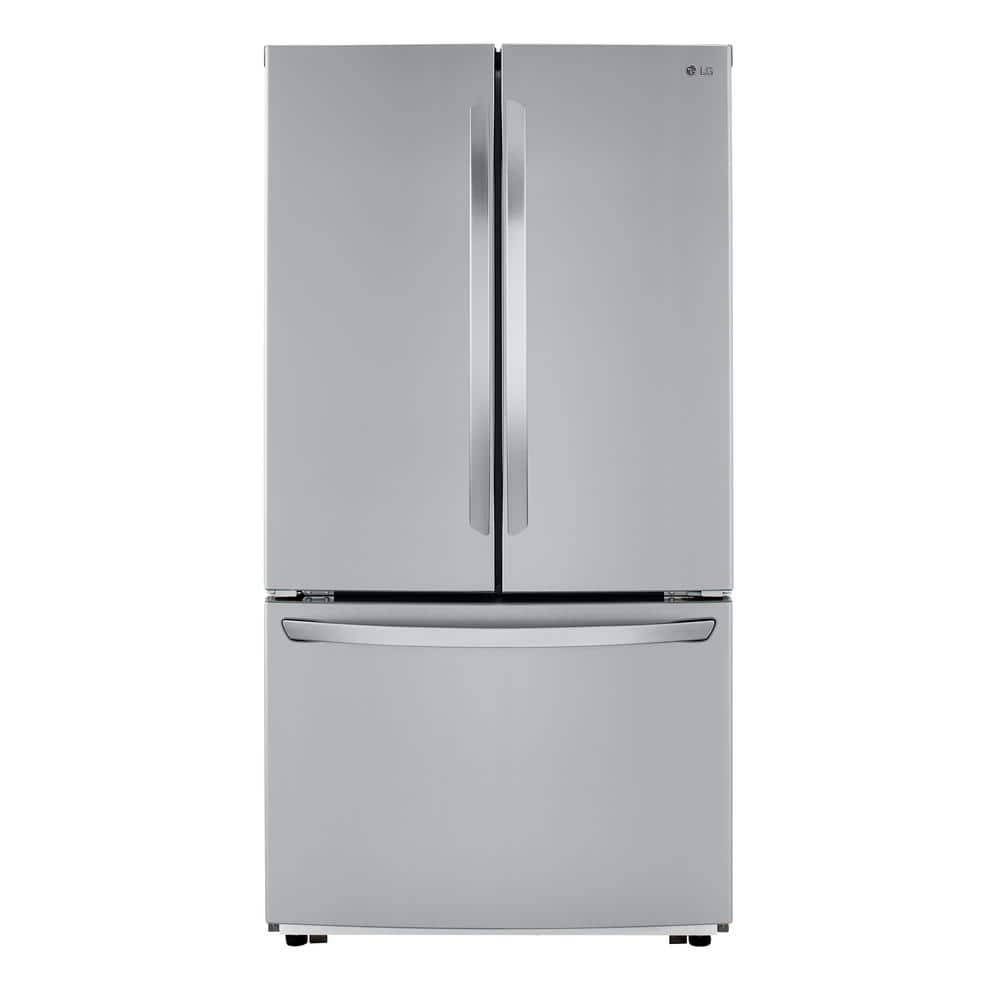
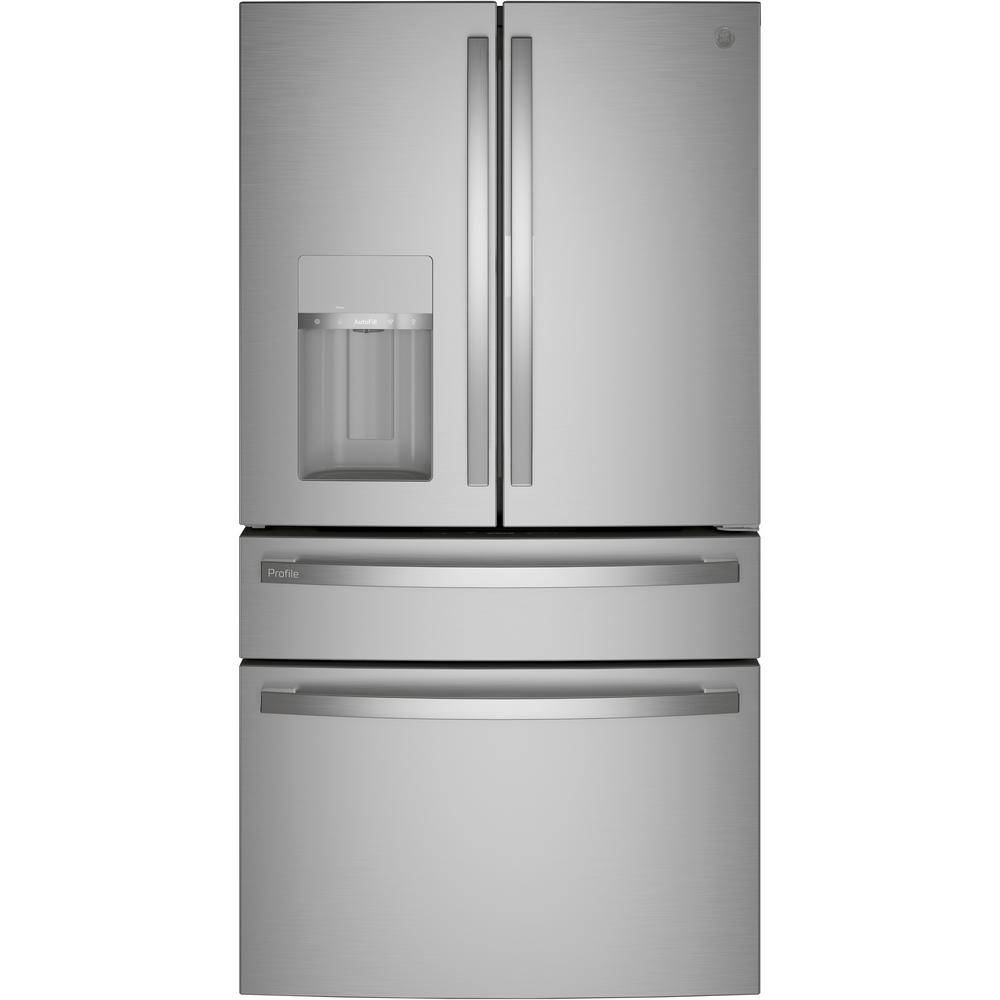
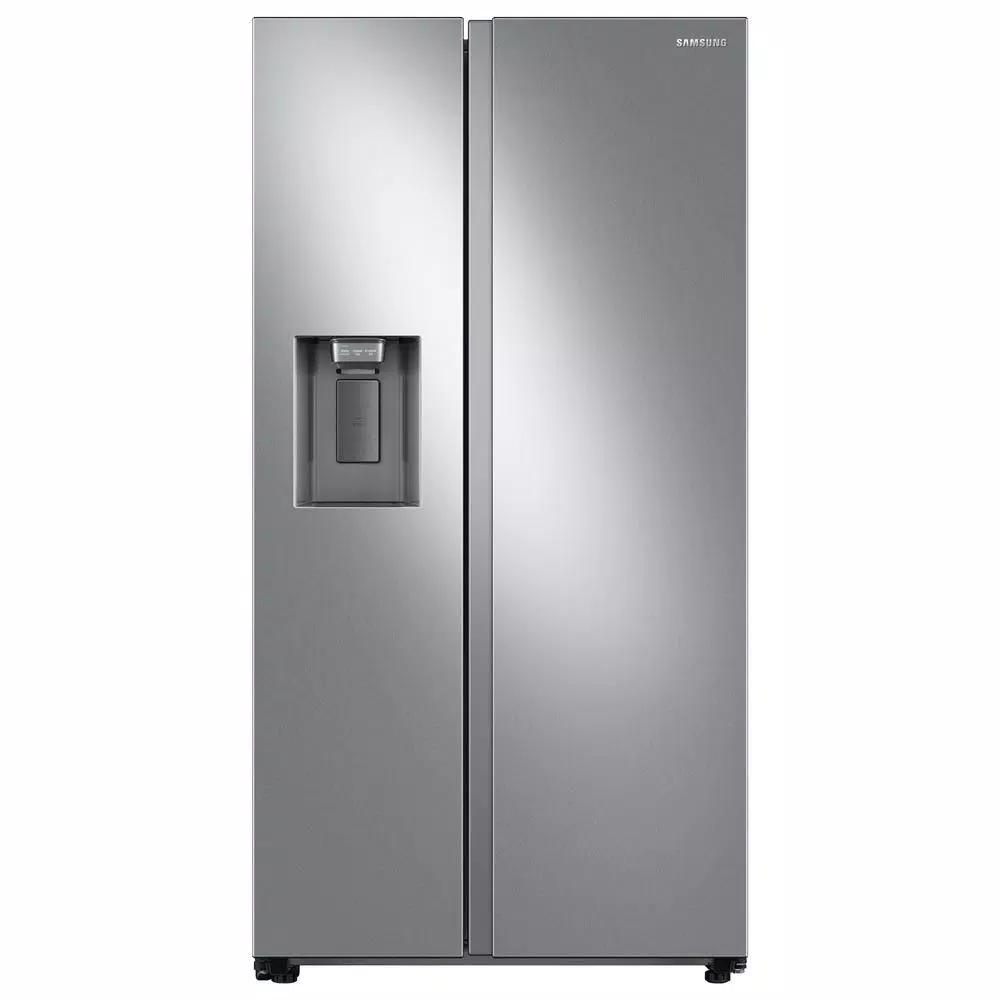
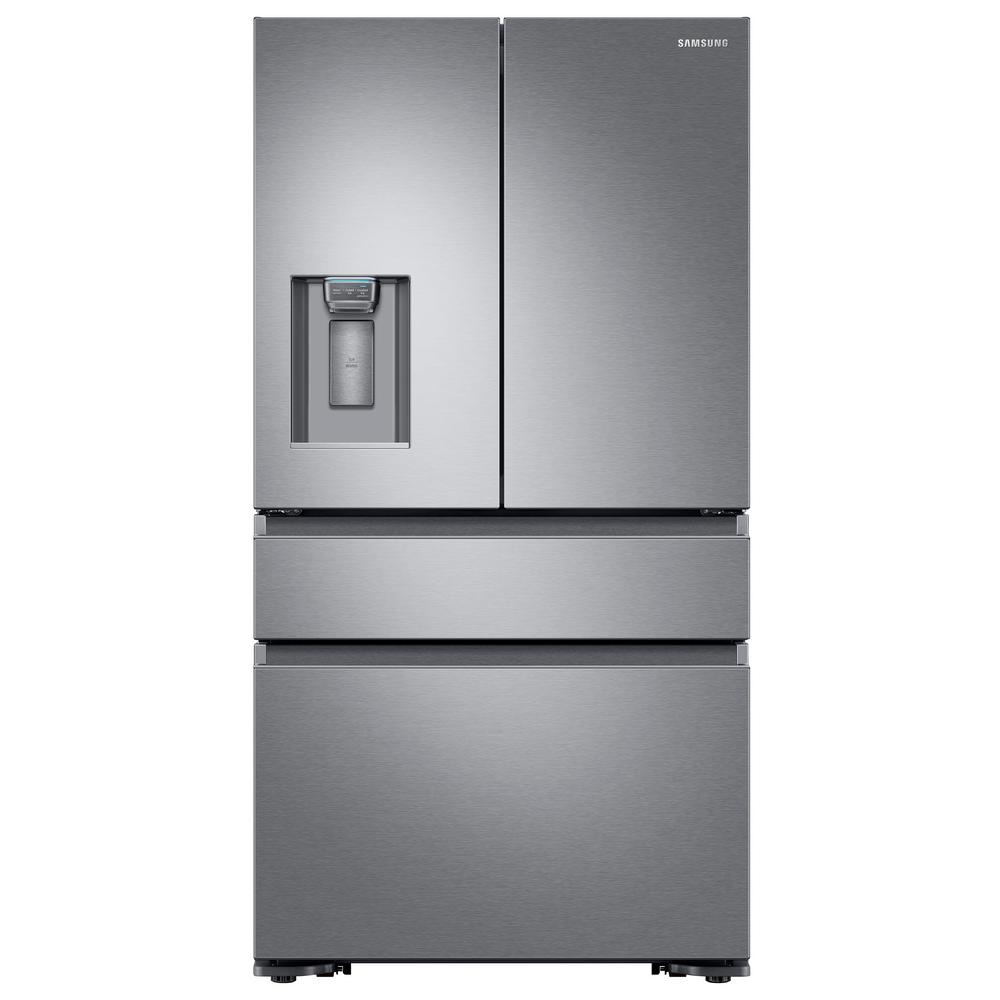
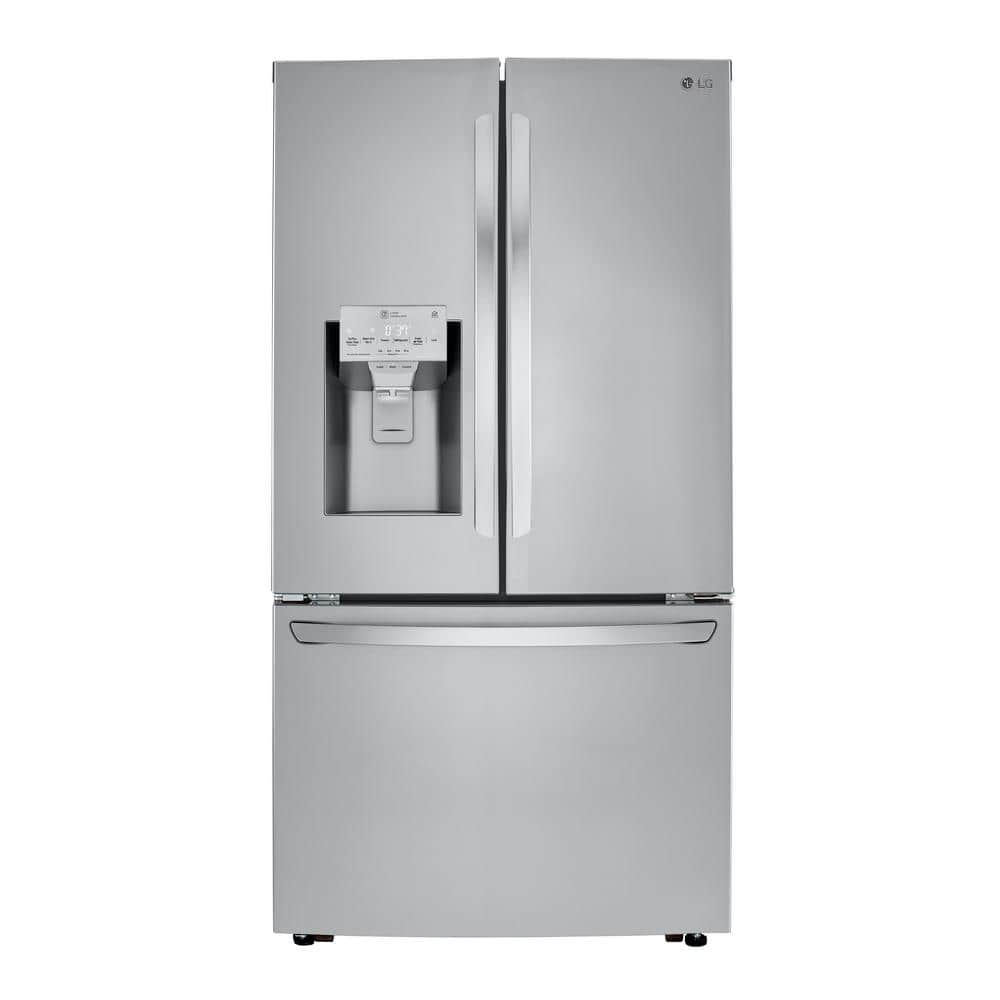
by Chris
Quiet and uncomplicated This fridge has two big virtues: – It’s very quiet. That’s a huge plus in an apartment. – It has a simple, no frills design that maximizes storage space, makes it more reliable (I hope), and keeps the price down (it’s much cheaper than most other 36″ French door counter depths). Other virtues: – The doors are stainless, but magnets stick to them. – Cooling vents above the doors keep what is usually the warmest area cold. Minor minuses: – Doors are slightly curved instead of flat. I happen to prefer the aesthetics of flat. – Door handles are standard uglies that all brands seem to use. – Freezer handle, which moves up and down, controls some kind of latching mechanism that includes plastic parts. I don’t see that point. It’s just one more thing that can break, and it’s more expensive. Maybe it’s necessary when freezers use a drawer design. – Vegetable and fruit drawers are not big enough. Seems that way for all fridges, especially counter depth. The simplicity means there is no ugly, breakable, complicating, space consuming water or ice dispensers. Good! I wish there wasn’t an ice maker either. That would’ve made the fridge even cheaper and saved space in both the freezer and in the main compartment where the water filter is located. I do not use ice makers. They make weird noises and like to break. Plus, I live in a high-rise condo where the consequences of water line leaks can be disastrous. Obviously, they can be disastrous in a house as well, but at least the damage is confined too your own stuff, not 20 others’. Not a risk I want to take on. Ice trays work just fine and I like the ice shapes better anyway. Door shelves are in fixed positions except the center shelf on the right door has two positions. There is so much room in the shelves that I have not had a problem with the lack of adjustability. All of the door shelves are capacious–deep enough to hold milk gallons or two rows of 1/2 gallon cartons, although only the bottom shelves and the adjustable shelf have enough vertical space for such items. The bottom shelves have enough vertical space to store Champagne. The Deli drawer and the top compartment of the freezer do not have partitions. The bottom compartment of the freezer has an adjustable partition. Main compartment shelves are adjustable, but there are only a couple of useful configurations. No specialized storage spaces for butter, eggs, or meat. I prefer keeping the space flexible. I moved the ice bin to the fridge and use that for meat. I’ve had the fridge only four months. No problems so far. I did a Thanksgiving bundle deal in 2020 with LG fridge, washer, dryer, and microwave. The combined discounts made the price only $1252 + $25 for old fridge haul away. Delivery was free and I did the install.
by Frank
Everything about this LG French-door refrigerator is excellent . Everything in it is in plain sight. The drawers and shelves have an intelligent design. I am recommending it to my family and friends.
by Dana
Exactly what we were looking for!
by Mace
Looks good and runs quite. I would recommend.